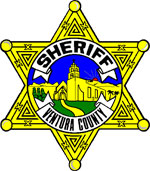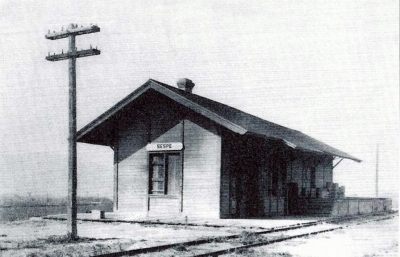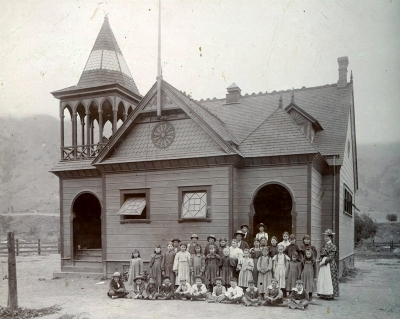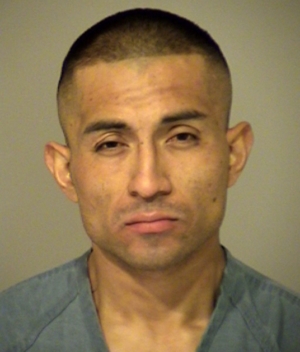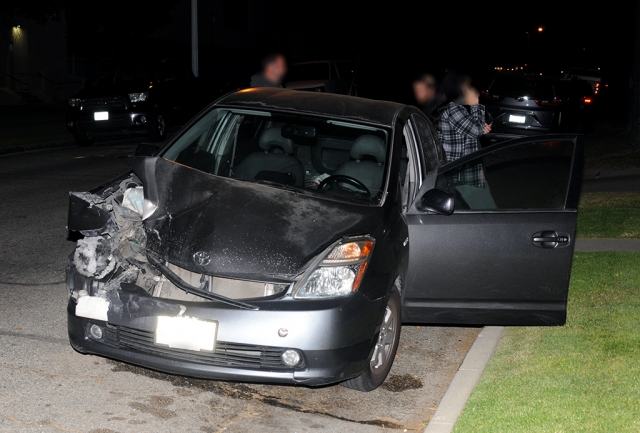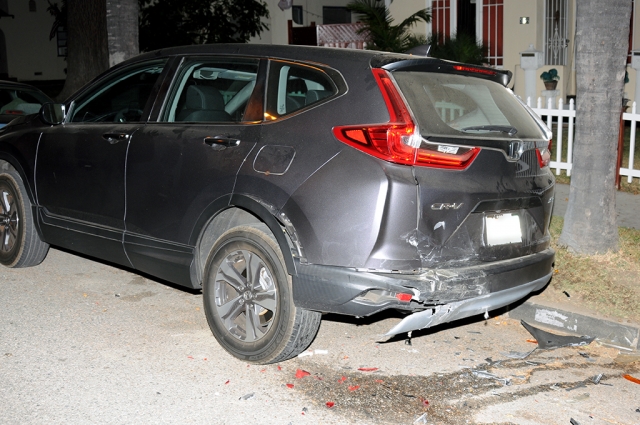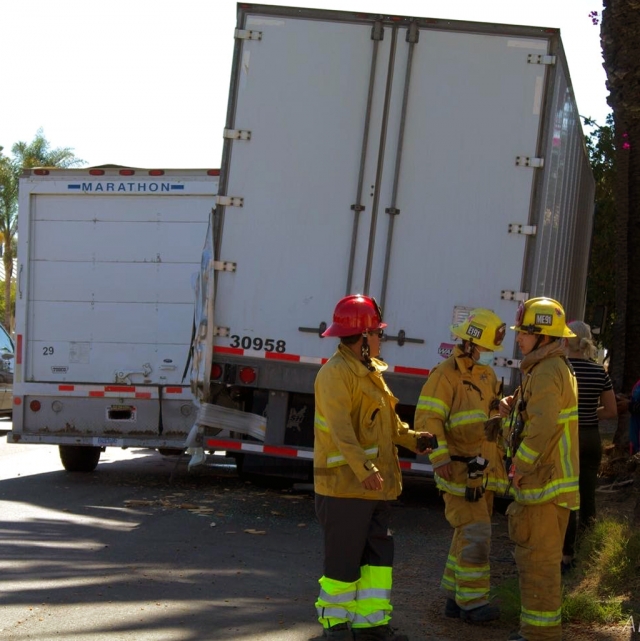|
By Ventura County Sheriff Department — Thursday, June 24th, 2021
Multiple residents of Fillmore have reported damage to their vehicles by having their windows shattered by a rock. The vandalisms occurred from June 9, 2021 through June 16, 2021, between 8:30 pm to 7:00 am. The damaged vehicles were parked on the street in different locations around the city. The suspect(s) may be targeting recent graduates from Fillmore High School. The Fillmore Police Department is asking citizens who may have information pertaining to these vandalisms to call Detectives Salas or Pewsey at the below listed telephone numbers. The reporting party may remain anonymous. Community: Fillmore Vandalisms Ventura County Crime Stoppers will pay up to $1,000 reward for information, which leads to the arrest and criminal complaint against the person(s) responsible for this crime. The caller may remain anonymous. The call is not recorded. Call Crime Stoppers at 800-222-TIPS (8477). |
|
By Anonymous — Thursday, June 24th, 2021
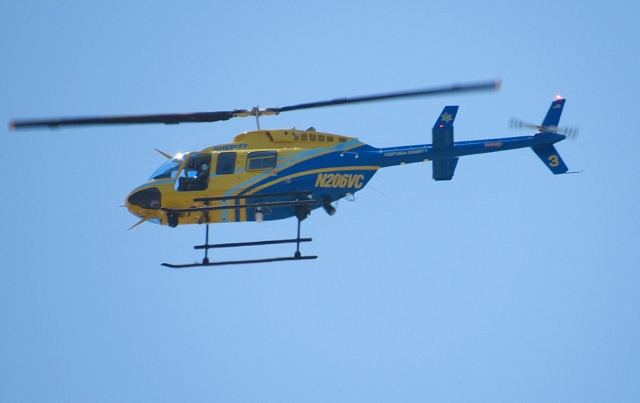 On Friday June 18th, 2021, at 1:35pm, the Ventura County Sheriff's and VCSO Copter 3 were searching for a male subject in the area of B Street and Blaine Avenue, Fillmore. Copter 3 was in the area searching for about 40 minutes and was released by 2:30pm. No information on the suspect was released. Courtesy Angel Esquivel--AE News. Enlarge Photo |
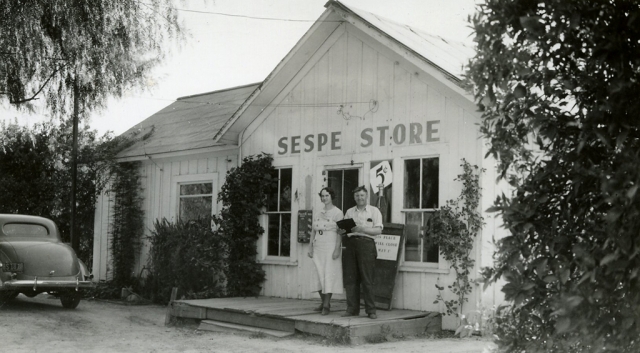 Sespe Store and Post Office on Grand Avenue, Mr. and Mrs. Lee Phillips, 1930s. Photos Courtesy Fillmore History Museum. Enlarge Photo By Anonymous — Wednesday, June 23rd, 2021
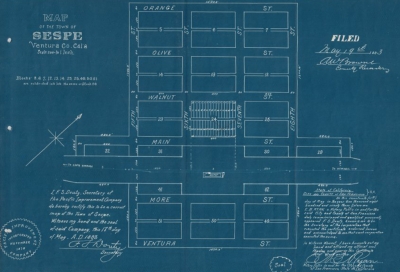 In May 1893 the Sespe Town Plan (above) was filed with the County of Ventura and was to be located between Sixth and Seventh Streets with the streets running from Fifth to Eighth. Only a few streets can still be found on maps found today. Enlarge Photo Courtesy Fillmore History Museum After the murder of T. Wallace More in 1877, the property that was Rancho Sespe was inherited by T. Wallace More’s surviving children: Mattie Mae More Storke, Thomas R. More, Wallace More and Alexander More. Mattie Mae Storke sold 3,379 acres to Sespe Land and Water Company headed by Jacob McNab and this became the town of Fillmore. Two of the brothers, Thomas and Wallace, jointly sold their 2,313 acres to Thomas Bard. Royce Surdam bought 1500 acres from Bard and began to develop Bardsdale. In July of 1887, Alexander More sold about 220 acres to Pacific Improvement Company, a subsidiary of the Southern Pacific Railroad. He also sold 50’ on either side to the proposed railroad track to Southern Pacific. In 1889 Pacific Improvement Co. sold land to the Santa Paula Methodist Episcopal Church for land for a church in the town of Sespe. They also sold property for a school to the San Cayetano School District. Alexander More died in late May 1889 while on a fishing trip to Santa Ynez Valley and his remaining portion of Rancho Sespe was sold at auction to settle his estate. On September 11, 1891, the property was sold to James L. High at auction for $75,000. On November 26, 1892, High sold it for $85,000 to Morton D. Hull. On May 9, 1893, a plan was filed for the Town of Sespe with Ventura County. It would be built around the Southern Pacific Depot which would be located between Sixth and Seventh Streets with the streets running from Fifth to Eighth, with six avenues, Ventura, More, Main, Walnut, Olive and Orange. Today only Fifth and Seventh Streets can be found on maps. This was on the land owned by Pacific Improvement Company. In August 1893, a prospectus was prepared for the Hull Subdivision of Sespe Ranch six miles east of Santa Paula with the Southern Pacific railroad running through it. 1,600 acres were offered in 10, 20-, 30-, 40-, and 50-acre parcels. Buyers would also be able to access sufficient water for orchards because “Sespe Water Company has developed ample water to irrigate the entire tract, have wells capable of producing about 3,500,000gallons of water per diem of 24 hours. This Company has just installed a thoroughly modern steam pumping plant …. (and) has laid several miles of large iron mains and a 14-inch line leads the water to their million-gallon reservoir.” So far research has not found any evidence that these parcels were advertised for sale like those in Fillmore and Bardsdale. Other than laying out the plan and apparently installing water lines, little of this town of Sespe was ever realized. As E. M. Sheridan wrote in 1928, “…it was hoped that this station of Sespe might really become the chief town of the valley. But by the time of the finish of the railroad in about 1886-7, the new town of Fillmore suddenly dawned on the horizon, with the railroad people given everything they wanted in the way of depot grounds and room for sidings, and first thing known Sespe was forgotten…” That doesn’t mean there wasn’t a Sespe Community. Ventura County was separated from Santa Barbara County in 1873. “Sespe” existed as a recognized voting district as early as 1876. The voting district took in everything from Santa Paula, east to the county line with Los Angeles County. It was an active community. The July 19, 1873, Ventura Signal reported on a well-attended July 4th celebration at Hercynian Grove near “Spraguesville” (at the mouth of the Sespe on the Santa Clara River). Mrs. Guiberson, Messrs. Haskins and Marple sang the Star-Spangled Banner. F. A. Sprague read the Declaration of Independence and later gave an oration “to the perfect satisfaction of all present.” In 1874 Frederick Sprague and his 13-year-old daughter, Iva, and 14-year-old son, Hartley, traveled by wagon to Ventura to purchase wood for the building of a school. The school he built was located on the north side of the Santa Clara River near the current north approach of the Bardsdale Bridge. It was 20’ X 30’ and, depending on teacher’s estimates, either 11’, 12’, or 16’ high. This was probably near where the 1873 4th of July Celebration was held. A few years later in 1880, the Sespe July 4th celebration was again going to be at Hercynian Grove with music by “…the Sespe songsters accompanied the vocal band of surrounding denizens; oration by Dr. S. P. Guiberson of San Buenaventura; prayer by Ari Hopper of the mountains, with “Hail Columbia” in the background; to finish with a grand prelude of “Hurrah for Horace and the Sespe.” Horace referred to newspaper man and sometime presidential candidate, Horace Greeley. Frederick Sprague was not in attendance as by this date he was in jail for the murder of T. Wallace More. A directory from 1898 lists over seventy households in Sespe. “Farmer” was given most frequently for occupation, but there were also “oilman”, “stone cutter”, “oil pumper”, “harness maker”, and “teacher”. The Methodist Church was built on the property near the Sespe Southern Pacific Depot which had been deeded them by the Pacific Improvement Company. In 1904, it was relocated to near the corner of Muir and Grand Avenue leaving only the depot at the original town site. In 1894 the Sespe Post Office was established, but not within the limits laid out by the Pacific Improvement Company. Instead, it was established, “at the (railroad) switch just west of the bridge,” and would serve approximately fifty families. This would be far to the east of the planned town. The post office moved with each new postmaster and there were seven between its inception and 1908 when Lee Phillips was appointed moving the Post Office to his store. Phillips would be postmaster until 1932 when the post office was consolidated into the Fillmore Post Office. Phillips ran the Sespe Store Sespe Avenue, later renamed Grand Avenue. His was not the first store to serve Sespe. The Sespe Cash Store, I. B. Martin, dealer in Fancy and Staple Groceries was in business in Sespe around 1902. The Ventura County Co-Operative, which also had stores in Piru and Fillmore was in business there in 1912. The store and post office would serve the farmers and ranchers in the area but also those working in the oilfields and at the brownstone quarry. Sespe may never have grown to be the town its promoters hoped to have, but it was a community that many called home. |
|
By Anonymous — Thursday, June 17th, 2021
Fillmore High School hosted their 2021 Graduation in traditional style this year at the Fillmore High football stadium. Although they were limited as to attendance because of the COVID-19 pandemic, they were still able to make graduation a success. On Thursday, June 10th at 7pm, FHS seniors took their walk across the stage to say their final goodbyes to Fillmore High. You can view the entire graduation using this YouTube link: https://www.youtube.com/watch?v=AarhW5fgVRQ |
|
By Anonymous — Thursday, June 17th, 2021
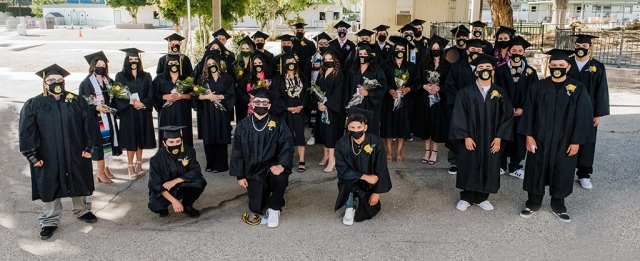 On Thursday, June 10th, Sierra High School hosted their 2021 Graduation ceremony. This year’s ceremony took place in front of the District Office while abiding by COVID-19 protocols; graduation was a success! Pictured is the Sierra High School Graduating Class of 2021. Enlarge Photo |
|
By Anonymous — Thursday, June 17th, 2021
33-year-old Jahwi Angeles-Ortega of Oxnard was arrested in March 2021 for vehicle theft in Moorpark with a toddler inside, and was apprehended with a assistance of multi-sheriff departments, including Fillmore Patrol stations. He was sentenced to two years probation and 240 days in County Jail. He was charged with felony vehicle theft, misdemeanor receiving stolen property, and misdemeanor prowling. He received 140-day credit for the 240 days as time already served plus "work time-good time" credits. He will be required to undergo substance abuse counseling and treatment among several other restrictions and requirements. At the time of his arrest, he had multiple outstanding warrants, was arrested for vehicle theft, and kidnapping but prosecutors never filled the kidnapping charge. |
|
By Anonymous — Thursday, June 17th, 2021
 The City of Fillmore announced there will be a fireworks display this year. This year’s display will be held on Saturday, July 3rd, 2021 at the Fillmore Middle School baseball field and is expected to begin at 9pm. Pictured is a photo from a fireworks display in past years. Have a Safe 4th of July! Enlarge Photo |
|
By Anonymous — Thursday, June 17th, 2021
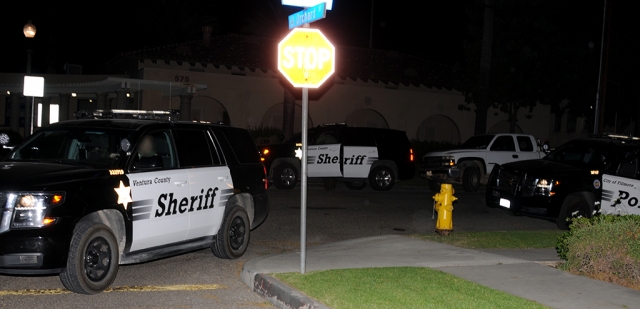 On Monday, June 8th, at 9:45pm, multiple police units responded to a hit and run incident at the corner of Orchard and First Street involving two parked vehicles. A Toyota Prius sustained major front-end damage, and a Honda CRV sustained rear end damage. No further information was given at the time of the incident. Enlarge Photo |
|
By Anonymous — Thursday, June 17th, 2021
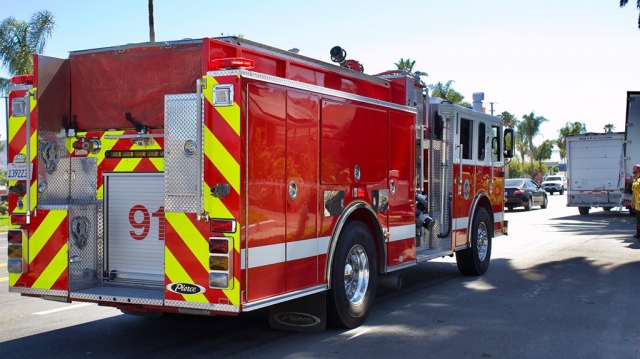 On June 13th, 2021, at 3:42pm, Fillmore Police, City Fire and AMR Paramedics were dispatched to a traffic collision in the area of Olive Street and Ventura Street. Arriving fire crews reported a box truck and a semi involved, with all occupants out. No injuries were reported. Cause of the crash is under investigation. Photos courtesy Angel Esquivel-AE News. Enlarge Photo |
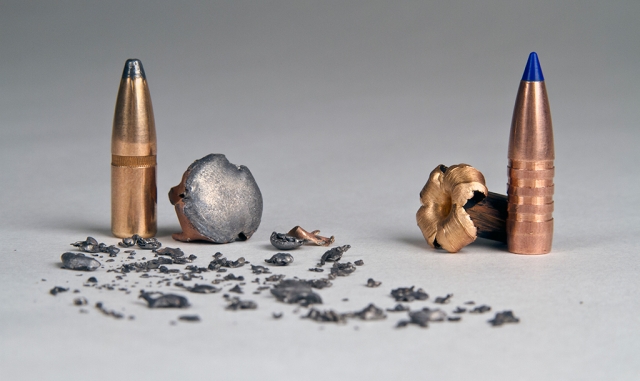 A shot lead bullet (left) and its fragments compared to a modern copper monolithic bullet (right). Many are switching to non-lead for its performance and safety for scavenging wildlife. Courtesy Hunting and Conservation Outreach, Great Basin Institute, Ventura Office. Enlarge Photo By Anonymous — Thursday, June 17th, 2021
Summer is finally here, a time when California deer hunters are dreaming about filling their empty freezers and when ranchers are seeing a proliferation of new ground squirrel burrows plaguing their fields. Most hunters and ranchers alike use a firearm to either provide their families with wholesome game meat, or reduce the population of destructive species. In 2020 both these groups saw Assembly Bill 711 (2013) in effect for its first full year, banning the use of lead ammunition for hunting of wildlife. The legislation was aimed at addressing lead poisoning deaths in scavenging wildlife, most notably the California condor. Multiple studies have traced a link between the use of lead ammunition and mortality in raptor populations, including bald and golden eagles. Lead has deep historical usage in hunting projectiles since it is dense, malleable, and easily mined but it tends to remain in the environment for many years. Shot lead bullets can fragment hundreds of times into an animal, especially when placed on hard tissue. The microscopic pieces left behind in unrecovered game, gut piles, or dispatched livestock become available to scavengers who unfortunately can succumb to lead poisoning. The new restrictions aside, hunters and ranchers continue to contribute to conservation. Revenue from license and gun/ammo sales are crucial sources of funding for wildlife conservation, while the modern diets of scavengers like the condor rely almost entirely on cattle and large terrestrial game. Making the switch to non-lead provides a clean source of food for condors and other scavenging raptors that frequent the area around Fillmore, and hunters and ranchers who shoot with non-lead are some of the most important stakeholders in the recovery of California’s raptor populations. Center and Rimfire As a previous Gazette contributor pointed out, you first need to understand how alternative metals fly, then test how new rounds perform with your particular firearm. The difference between densities of lead and copper (the most common non-lead option) alters the flight path and may require resighting. Copper bullets may come with a polymer tip to improve accuracy and expansion of their copper petals such as the Barnes TTSX, Hornady GMX, Federal Trophy Copper, or Nosler E-Tip, while others have an exposed hollow point such as Sig Sauer’s Copper Elite, Barnes TSX, and the Federal Copper HP. The monolithic design undeniably has better weight retention and penetration which is crucial for quickly dispatching tough species like feral hogs or large livestock. They are all manufactured with strict specifications to consistently expand and release their energy on target. For ranchers and hunters conducting nuisance species management or harvesting furbearers, an appropriately sized round may be available as a frangible. Frangibles are copper-jacketed and filled mainly with powdered copper alloy core to create a single entrance and release their energy rapidly. Options such as the Barnes Varmint Grenade, Hornady NTX, and Nosler Ballistic Tip Lead Free are excellent choices. The offerings for the old iron sight rimfire rifle now include Hornady NTX, CCI Copper-22, and Norma ECO. Although these lead alternative options are less dense and destabilize in flight at longer ranges, this is not much concern for standard rimfire hunting conditions. Shotgun The lead-free options available for the various gauges and applications of shotguns are too numerous to mention here but the alternative metals- steel, bismuth, tungsten, or alloys of them should be tested to identify if they are conducive to your firearm. At the end of the day the firearm chooses the best performing ammunition, not the shooter. Check that your gun is rated for these harder alternatives as older models and Damascus steel barrels can get damaged. Shot sizes will also change. Steel, as a rule of thumb, should be shot one to two sizes larger than a shooter’s previous lead load, while tungsten can be shot 3 or 4 sizes smaller. A modification of choke size may be in order regardless. Note- if you find small upland loads like size 6 steel right now, congratulations on winning the California lottery. If competing for rifle and shotgun ammo is running you ragged, many hunters are now switching to air rifles. Unlike the farm’s old Red Ryder, modern designs of pellet rifles can fire a projectile in excess of 1500 feet per second. Pellet alternatives include copper and alloys of tin, bismuth, and zinc that are capable of performing better than lead counterparts. Researching larger calibers like .22 or .25 can help you find a gun and pellet combination that matches your needs, and the best part is that they both ship without a background check right to your door! Some popular options there are Haendler & Natermann H&N Baracuda Green, Predator GTO Lead-free, and Daisy Precision Max Flat Lead-free. Practicing at varying distances can increase confidence in your bullet choice and lead to success in any scenario. By researching rounds you see on the shelf, thoroughly cleaning guns to remove metal residue, testing multiple options, or buying a rifle with a higher twist rate you can ensure your aim stays true and your target goes down humanely. Ammunition shortages are still very real so it is in the best interest to start buying your ammunition several months ahead of season and get cozy with your local purveyor. Hunters and ranchers- take pride in the knowledge that you are contributing to the propagation and recovery of scavenging species by shooting non-lead ammunition. You are making the recovery of species such as the California condor possible, all while continuing the sportsman’s tradition of conservation. If you would like to learn more about the why and how of switching, visit www.huntingwithnonlead.org. |

